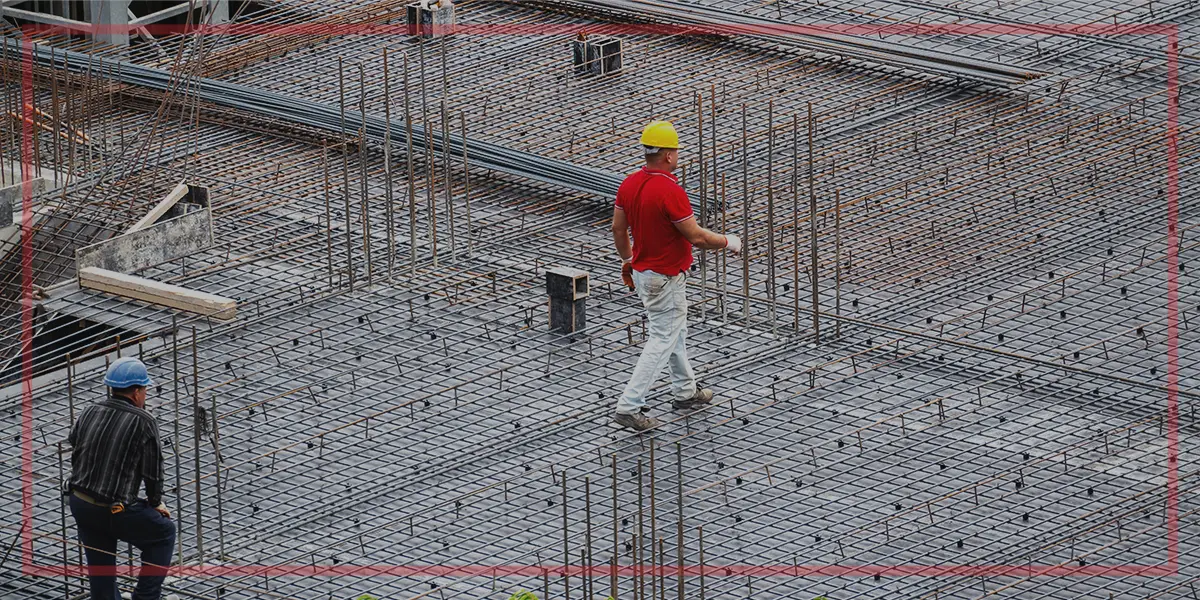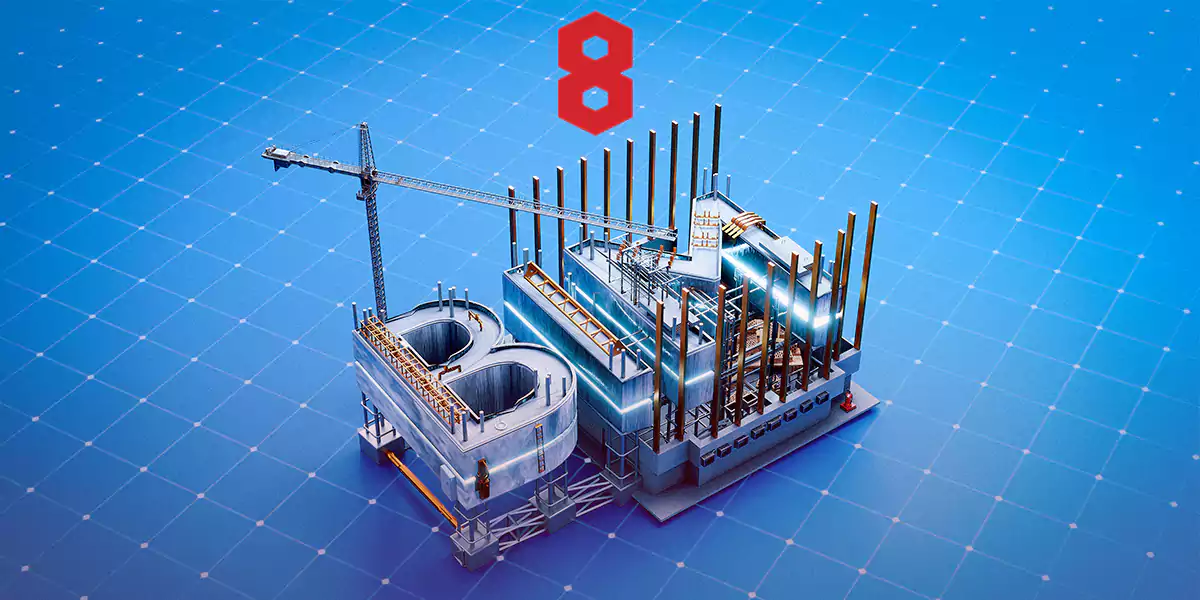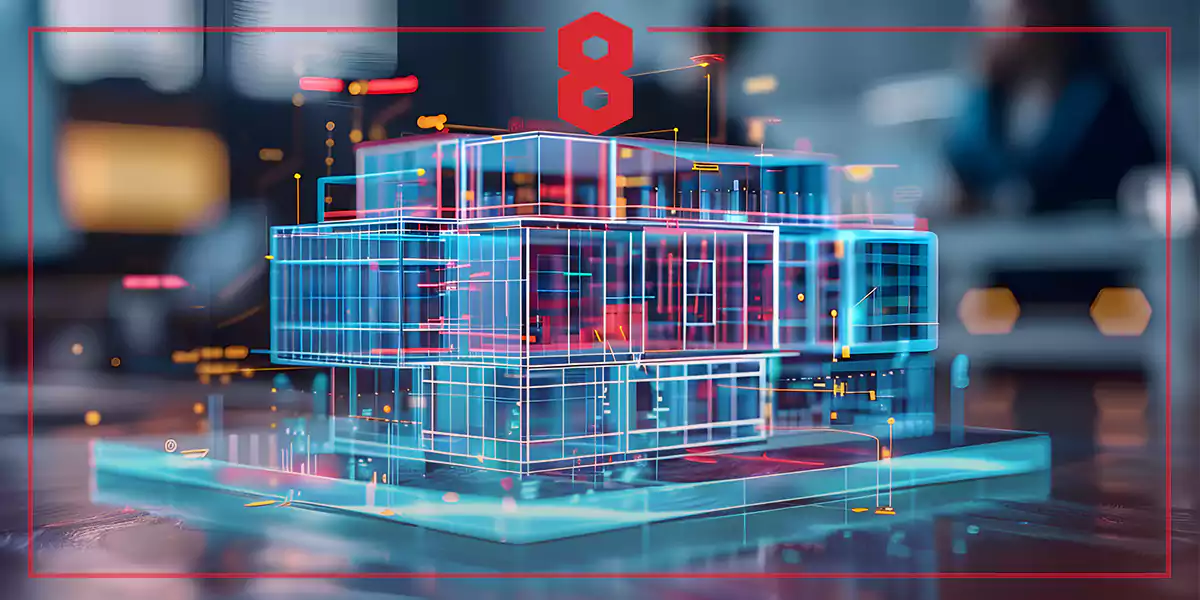In the fast-paced world of construction and architecture, staying ahead of the curve is essential. Building Information Modeling (BIM) technology has emerged as a game-changer, transforming how projects are planned, designed, and executed. By providing a digital representation of physical and functional characteristics, BIM enhances collaboration, increases efficiency, and minimizes costly errors. In this article, we’ll explore the top 9 benefits of BIM technology and why integrating it into your workflow can lead to significant improvements in project outcomes. Whether you’re an architect, contractor, or project manager, understanding these advantages will empower you to make informed decisions that elevate your projects to new heights. Let’s dive into the world of BIM and discover the compelling reasons to embrace this innovative approach.
Top 9 benefits of BIM technology

Building Information Modeling (BIM) is revolutionizing the construction and architecture industries. Here are the top 9 benefits of using BIM technology:
1. Early detection of a collision
While it’s true that a model can never be perfectly true to reality construction conditions will always present unique challenges utilizing Building Information Modeling (BIM) technology is undeniably beneficial. By detecting errors early in the design phase, you can significantly reduce the likelihood of costly mistakes on-site. BIM tools automate collision detection among critical elements like electrical cables, sewer pipes, and ventilation ducts, allowing you to run checks that identify conflicts before construction begins. This streamlined approach saves valuable time compared to manually reviewing drawings across different disciplines. Each team can link their models to a centralized platform, enabling early conflict detection when making changes is far less expensive. After all, it’s much more advantageous to address these issues in the planning stage than to find yourself in a muddy excavation, racing against time as you realize a sewer pipe is set to intersect a concrete wall.
2. Faster design and construction
The prospect of working twice as fast is undoubtedly appealing, but let’s take a moment to reflect on the evolution of design tools. While some may have started their careers with traditional blueprints, others have seamlessly transitioned to CAD. Remember when large computers were deemed too slow, expensive, and complicated? Times have changed dramatically, and today’s architects and designers are faced with increasingly complex geometries. They strive to create unique designs that stand out, all while aiming to reduce costs and time.
Although producing 2D drawings may seem quicker than developing a 3D model, the reality is that modifications can be cumbersome and time-consuming. This is where parametric design comes into play, revolutionizing the industry by enabling rapid adjustments. With the ability to easily alter input parameters like spacing, width, and length designers can see the impact of their changes in real time.
So, can you truly produce drawings for intricate structures twice as fast? Consider the scenario where columns and supports need repositioning; how much time would it take to update the entire documentation? Embracing modern design methodologies not only enhances efficiency but also ensures that adaptability is at the forefront of your projects.
3. More precise planning
Excel is indeed a powerful tool, but it’s essential to recognize that BIM technology serves a different purpose. Rather than replacing spreadsheets, BIM streamlines and automates the collection of information from 3D models, alleviating the burdens of manual data entry and the errors that often accompany it.
For instance, BIM technology enables the efficient extraction of materials lists—detailing types, quantities, volumes, surface areas, and lengths—directly from the model. This information can be seamlessly exported to Excel, and any modifications made to the design will automatically update material quantities, eliminating the need for tedious manual calculations.
Additionally, cost estimation becomes clearer and more accurate with BIM. By integrating material lists with data on labor hours and material pricing, costs adjust automatically whenever material choices change.
BIM also enhances project scheduling. By linking timelines to the model, we can visually represent which construction elements are planned, ordered, or completed, using color coding for clarity. Furthermore, as you prepare payment plans and track expenses throughout the construction process, BIM allows for a comprehensive visualization of the relationship between ongoing work and associated costs. Embracing this technology not only improves efficiency but also elevates the overall quality of project management.
4. Visualization at an early stage of the project
It’s not uncommon for investors or clients without an engineering background to struggle with traditional drawings and sections, leaving them unable to fully grasp the design concept. Even experienced professionals can find it challenging to visualize complex projects through 2D representations alone. This is where the power of a three-dimensional, multidisciplinary model comes into play. By creating a 3D model, you can effectively present the final design and its relationship to the surrounding environment. Even a basic 3D visualization can significantly enhance understanding, providing clarity that traditional drawings often lack. This improved visualization can be crucial, potentially influencing decision-makers and determining the success of a bid. Embracing 3D modeling not only aids communication but also positions your project for greater success in a competitive landscape.
5. Higher quality of performed work
Frustration often arises when reinforcement does not align with what was planned, despite being clearly outlined on paper. With the advent of 3D reinforcement models, we can significantly reduce conflicts that often go unnoticed in traditional 2D sections. This not only saves valuable time on the construction site but also minimizes delays from seeking clarification from designers. Designers may not always be readily available. Furthermore, site engineers can directly access the 3D model, allowing them to visualize complex reinforcement schemes clearly. This eliminates the guesswork of interpreting the designer’s intent. By adopting 3D modeling, we enhance collaboration and efficiency, leading to smoother project execution and better outcomes.
6. Better communication in the project
The success of larger projects hinges on effective communication among all stakeholders, including investors, designers, construction managers, and other professionals. Establishing an ideal communication framework can be challenging, but reducing the overwhelming volume of emails and phone tasks is a crucial first step. By streamlining communication, we can avoid the confusion that arises from countless messages, many of which are forgotten shortly after being sent. Building Information Modeling (BIM) technology has emerged as a game-changer, transforming how teams plan, design, and execute projects. This approach allows us to track individual tasks on a single virtual board. It links tasks directly to specific elements in the model and their development stages. With a clear visual representation of tasks and responsibilities, project leaders can easily monitor progress. They can respond promptly, ensuring that everyone stays aligned and projects move forward smoothly.
7. Reducing delays and errors
While not every worker on-site uses tablets and mixed reality glasses yet, BIM technology is reducing errors in drawing creation. It also minimizes misunderstandings during construction. Many design offices create 3D models but often revert to paper formats for approvals. This leads to a higher likelihood of mistakes. To address this, we should eliminate the transitional phase and use the 3D model as the sole final product. With a reinforcement model in hand, contractors can independently generate bending lists directly on-site, without relying on designers. For instance, in one project, a contractor received a cumbersome 40-page reinforcement list containing over 200 tons of material, all lumped together without any clear separation of elements like foundations and walls. By fully embracing 3D models, we can streamline workflows, enhance clarity, and empower contractors to work more efficiently and accurately.
8. Competitiveness
Increasingly, investors are realizing that simply throwing money at projects isn’t always effective. This has led them to focus on “soft criteria” in contracts, which enhances competition among companies that show reliability and comply with labor laws and safety regulations. Quality may not always match the lowest bid. In Norway, the Best Value Procurement (BVP) method is becoming popular, emphasizing criteria beyond price—where price is only 25%. The other criteria include project execution plans (25%), risk assessment (15%), added value (10%), and the competence of key personnel (25%). Many tenders now require Level 3 BIM, meaning companies that can’t meet this standard are excluded. Additionally, firms can gain extra points for expertise in new technologies under the competence criterion. Thus, BIM is evolving and being integrated into many projects, significantly influencing the industry landscape.
9. Increasing efficiency and productivity
Building Information Modeling (BIM) plays a crucial role in addressing the stagnation of productivity in the construction industry.By providing a digital representation of a project’s physical and functional characteristics, BIM facilitates better collaboration. It improves project visualization and enhances communication among stakeholders. This technology allows for more efficient planning, design, and management of construction processes. As a result, it can reduce errors and rework. Embracing BIM could significantly boost productivity in the construction sector, aligning it with advancements seen in manufacturing.
In conclusion, the adoption of Building Information Modeling (BIM) is no longer a choice but a necessity for successful project execution in today’s construction landscape. By enhancing collaboration, reducing errors, and streamlining workflows, BIM empowers teams to deliver projects on time and within budget. Its ability to facilitate better decision-making and foster transparency among stakeholders makes it an invaluable tool in the modern construction process. As the industry continues to evolve, embracing BIM will not only improve efficiency but also drive innovation and competitiveness.
By partnering with 8-Dec, you can leverage services such as advanced analytics, real-time data integration, lifecycle management, and project optimization to maximize the benefits of BIM. Investing in BIM technology today means positioning your projects for success tomorrow. Don’t miss out on the opportunity to transform your approach contact 8-Dec to make BIM an integral part of your next project.






